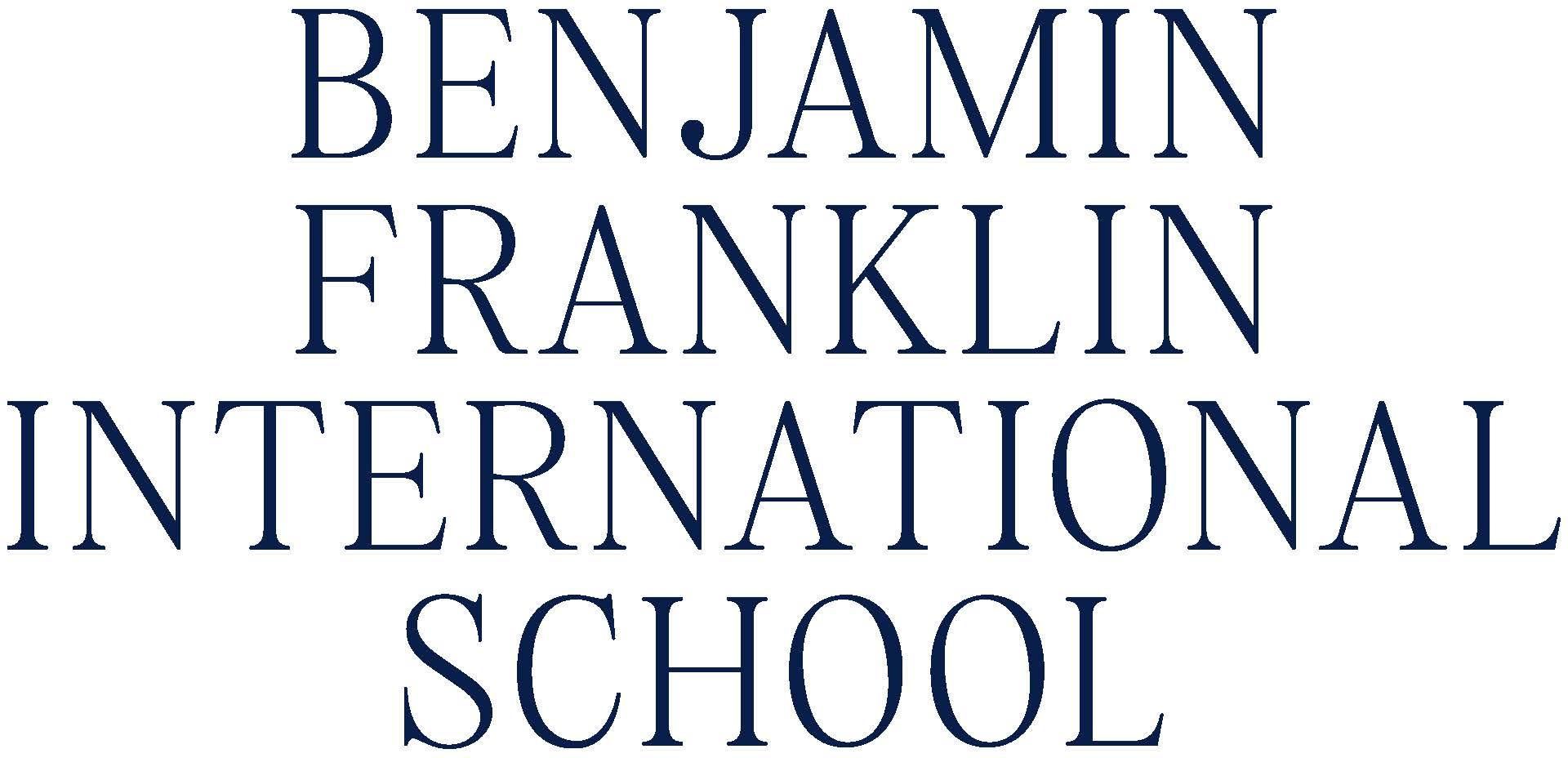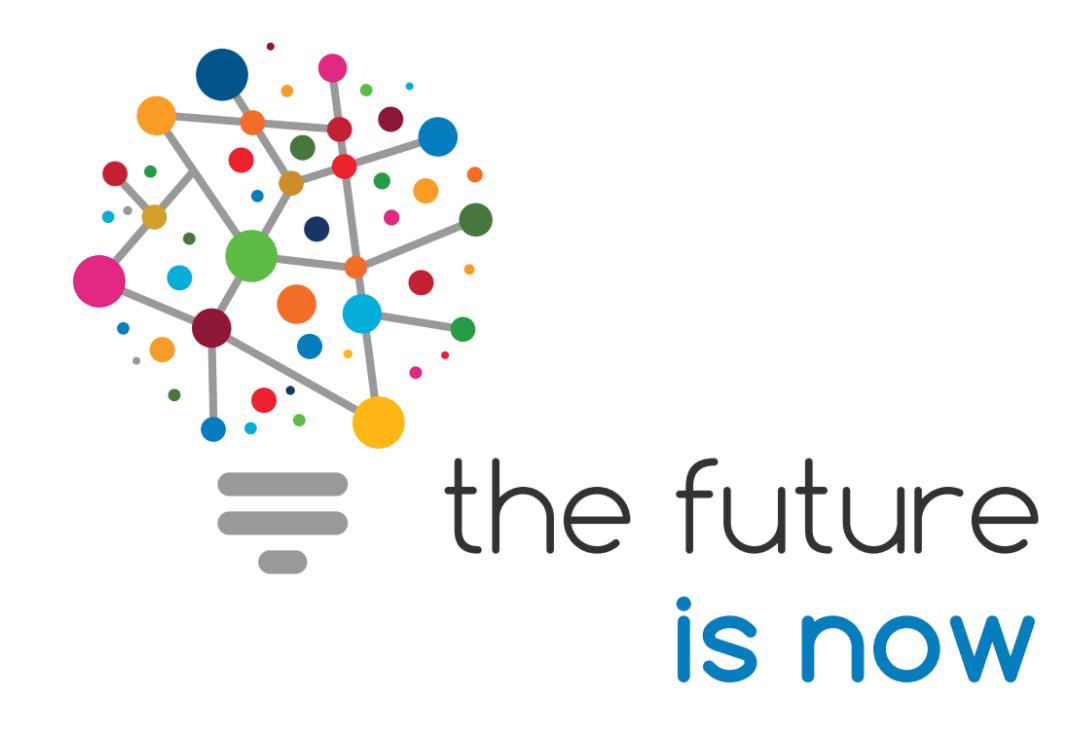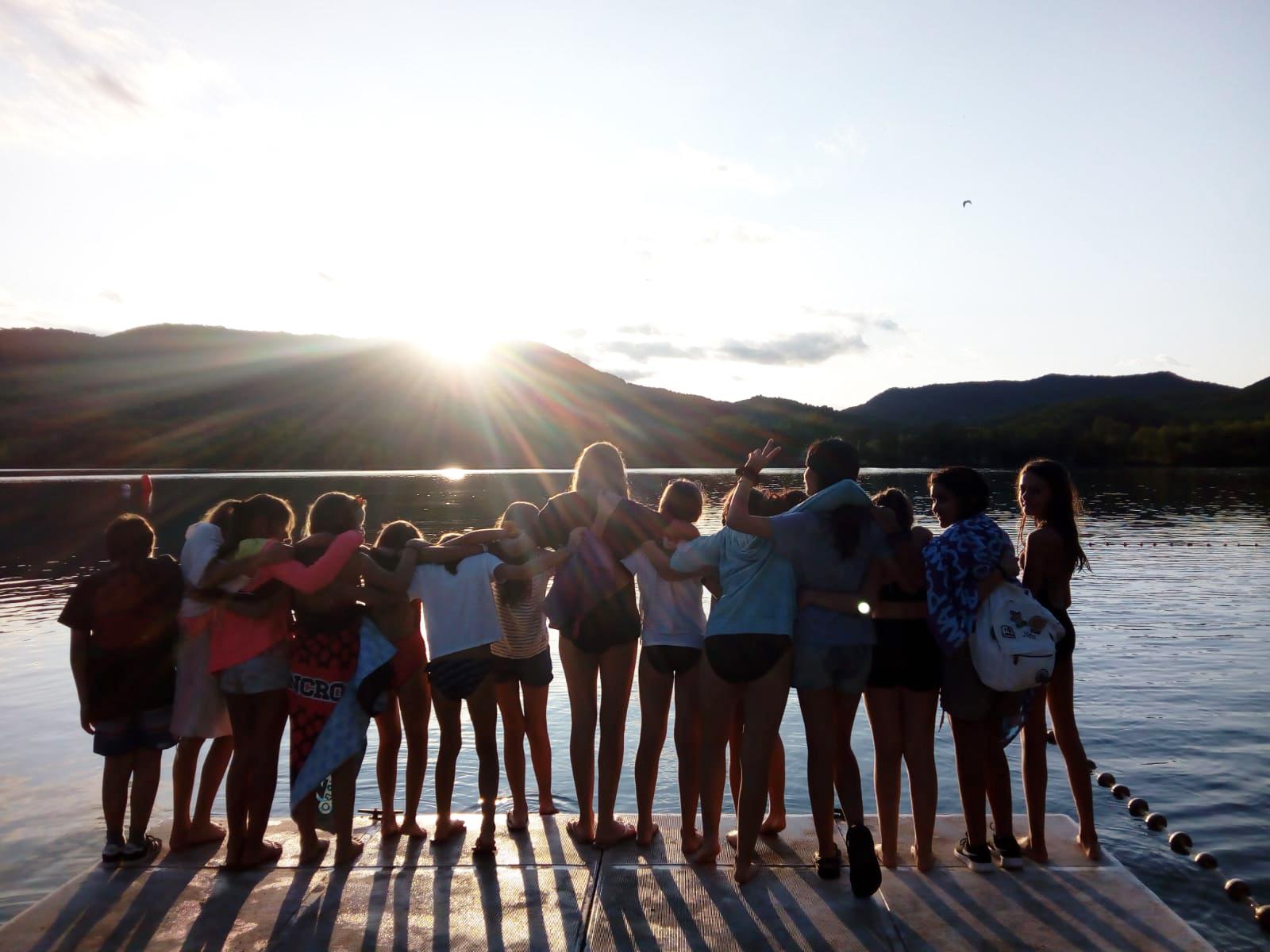


A Vision for Learning 2022-2025





A Vision for Learning 2022-2025


We will enhance students´ opportunities to learn by doing, through opportunities to observe and interact with the local and natural environment and the world of work. Through teamwork and fail forward experiences we will nurture students’ self-esteem and will enhance their confidence to find collaborative solutions to problems faced personally, locally and globally. We will solidify students’ connection with self, with others and the world around them. Beyond readiness for college and employability in the future, we aspire to develop our students as positive change agents by nurturing a spirit of empathy and adventure, founded in social responsibility to make the world a better place.

1. Outdoor Learning: Develop an N-12 outdoor education curriculum continuum. This will include the expansion of curricular integration with units of work, outdoor education lessons, projects, expeditions, and fieldtrips that both capitalize on our geographical location in Catalonia and expand student experiences further afield.
2. Work Experience: Implement an internship program to enable High School students to experience authentic workplace and higher education experiences outside of the school campus in real world situations.
3. Global Citizenship: Further develop and implement the Global Citizenship program to expand the number of students empowered to take action and be social entrepreneurs, community leaders and innovators
4. Community: Train and empower students and staff to actively implement research based collaborative practices that focus on the root causes of learning challenges such as design thinking, visible thinking, restorative practices, and problem-solving methodologies.
5. Local Resources: Capitalize on our Barcelona location to enhance student experiences that cultivate their creativity, collaboration, and innovation.


For students to solidify their connection with the world around them and to be able to understand and capitalize on their own learning experiences we must create field trip, work, and service experiences, that value students being able to push themselves outside of their comfort zone, that challenge them to work hard outside of the classroom on non-academic tasks, to engage in difficult conversations, cope with uncomfortable situations, take risks and learn from their mistakes. We intend to contextualize learning by de-compartmentalizing “disciplinary silos” to allow for more authentic experiences.

• All students are engaged in outdoor education and field trips as a transdisciplinary experience that fosters grit, resilience, self-reliance, self-esteem and confidence.
• Students are able to articulate how their learning is related to the Global Goals.
• All students are engaged and empowered through a range of service and action projects and use entrepreneurial skills to innovate, design and implement solutions for real world problems.
• All students are frequently engaged in a range of learning opportunities within the context of field trips
• Students are involved in contextualised problem solving projects that demonstrate design thinking methodologies, empathy, and visible thinking.
• Staff routinely utilize restorative practices when responding to behavioral challenges.
• Experiences outside of the physical classroom are embedded within the written, taught and assessed curriculum and applied through all grade levels, subject areas, and Service/Action projects.
• Students are learning in a selection of appropriate outdoor spaces purposefully designed and built to support outdoor learning experiences.
• Students produce a range of authentic learning products and assessments designed to measure and validate what we say, and value related to experiential learning.
• Students’ autonomy and agency is fostered and is evidenced by a range of interdisciplinary, multidisciplinary, and transdisciplinary challenges.
• A collection of evidence including student reflection that personalization of learning exists and that students have ownership of their own learning.
• Students have work experiences that foster real world perspectives on their learning and allow them to vision their future outside school.
• Students are experiencing learning in the context of Barcelona´s art galleries, architecture, historical and cultural locations, museums, ocean, mountains, flora and fauna.
• Students have the opportunity to experience adventure, expedition, and exchange travel to areas of Spain and further afield not ordinarily experienced through family travel.
• All learners have the opportunity to take supported risks appropriate to the environment and to themselves.
• Staff plan for and assess metacognitive thinking and self-reflective practices through experiential learning.


We aim to engage and empower our students with the creative and innovative skills and dispositions to solve real-world challenges. Our vision is to enhance students' chances to do and learn in context and to create space for students to imagine new realities. Beyond readiness for college and employability in the future, we aspire to develop our students as positive change agents by nurturing a spirit of entrepreneurship, founded in social responsibility to make the world a better place.

1. Science Technology, Engineering, Arts and Mathematics +: Develop and build on STEAM Curricular and Co-curricular programs to include Engineering, Robotics, Micro-Electronics, Computer Science and Digital Art that embody interdisciplinary and transdisciplinary learning.
2. The Arts: Foster creative confidence through the performing and visual arts so that our students can build strong imaginations, learn by collaborating, develop the ability to think outside the box, boost their self-confidence and build a deeper cultural understanding of themselves and others.
3. Entrepreneurship: Develop transdisciplinary and interdisciplinary experiences that allow students to be creators, builders, and operators of new ideas by fostering design thinking, measured student risk taking and innovation.
4. Partnerships: Build transformative local and global partnerships with business, industry, and academic institutions to enhance learning experiences for future preparedness.
5. Project Based Learning: Expand student opportunities to gain knowledge and skills by working for extended periods of time to investigate and respond to authentic, engaging, and complex questions, problems, or challenges.
6. Graduation Endorsement: Implement Graduation Endorsements for STEM, STEAM and The Arts.


Students will be able to learn through measured risks so that they have the confidence to solve problems in their own lives as well as making a positive difference in the world. By learning to innovate and to value failing forward as part of their learning process students will think more flexibly across disciplines and will see multiple iterations of their ideas and learning products as success.

● The Arts and Design are valued as core subject that all students take within the schedule.
● Students are engaged in a range of learning opportunities within the context of STEAM Learning.
● Students routinely use problem-solving methodologies, such as Design Thinking, that are embedded within the written, taught and assessed curriculum and applied through all grade levels, subject areas, and service/action projects.
● Students produce a range of authentic learning products and assessments designed to measure and validate what we say and value related to innovation and creativity.
● Students use a consistent design cycle model N-12 and show development of skills from grade to grade.
● Students’ autonomy and agency is fostered and is evidenced by a range of interdisciplinary, multidisciplinary, and transdisciplinary challenges.
● Students learn in a selection of new and refurbished learning spaces and studios for innovation and creative expression purposefully designed and built to support learning by creating, making, and experimenting.
● Students experience open ended tasks with multiple entry points that stimulate curiosity and exploration.
● Students are inspired and motivated through relevant and transferrable tasks
● Students use strategic and extended thinking to increase their depth or understanding
● Student learning intentions are conceptual and have relevant real-world context.
● Students routinely deconstruct their products of learning and are assessed on their ability to reflect and revise as part of the learning process, valuing process over product.
● Signature routes to graduation include STEM, STEAM and The Arts learning pathways.
● The International Society for Technology in Education ISTE Standards for students are integrated into unit and lesson design
• Students recognize the rights, responsibilities and opportunities of living, learning and working in an interconnected digital world, and they act and model in ways that are safe, legal and ethical.
• Students use digital tools to broaden their perspectives and enrich their learning by collaborating with others and working effectively in teams locally and globally.




As a school, we will be highly effective at empowering students and staff to seize their potential and learn deeply. To ensure this outcome, we need to guarantee that our written, taught and assessed curriculum is research based, aligned appropriately and understood by all. If we build our culture of learning in our whole community students will feel more connected, belong wholly and will feel included. Enduring knowledge will be our focus and learning will be contextualized and meaningful.

1.Effective Teaching : Ensure that every teacher is able to articulate, contextualize and assess what students should be able to know and do in each lesson and unit, what enduring concepts and understandings they want them to have.
2. Agency for Learning: Frame lessons and units so that students can action their talents and passions.
3.Transform Assessment: Create a school ecosystem that values assessment as learning and for learning. Empower teachers to be confident in classroom strategies to make student thinking visible thus allowing teachers to give students valuable feedback that lifts their learning.
4.Ensure Equity and Inclusion: By increasing our teacher effectiveness to provide inclusive learning we will advance our commitment to an open, inclusive community which provides learning opportunities that ensure academic and social and emotional well-being for our diverse student body.
5. Valuing Balance: Continue developing kind, honest, respectful, and responsible students by continually upgrading our programs that lead to strong student self-esteem, knowledge about self and students’ ability to make good choices
6. Parent Partnership: Learning includes parent programs that incorporate internal/external speakers and resources targeting child protection/safeguarding, cyber safety, digital intelligence, drugs and alcohol, bullying, anxiety, stress management and sexual health and wellbeing.
7. Making Thinking Visible: Develop a culture that all staff are data leaders and that teachers that gather a variety of visible learning data types are better able to impact learning. Amplify the use of existing learning data by using protocols for working in teams and embed data driven goal setting into the staff professional learning model.
8. Documenting Learning: Capture evidence of our staff and student learning journeys and action research to document learning impacts and to foster reflective dialogue that lifts learning.


Comprehensive community philosophies and definitions of learning, inclusion and intercultural competency will be crafted, and the necessary actions will be taken to live these statements fully. We will implement tools to measure the progress of learning and will take actions to advance inclusivity and intercultural competency. By collecting and using learning data to drive decisions about teaching and lesson planning we will seize the multifaceted potential of all students. Through intentional lesson design, we will value the complex process of thinking and learning. Learning will be contextualized, relevant and enduring.

● Unit and lesson plans lead to conceptual learning and show how we envisage the desired learning intentions will be assessed authentically
● Students can routinely articulate what they are doing and why they are doing it because they understand and can reflect on the learning intentions that they are pursuing and the activities that they are engaged in.
● Students can articulate the enduring understandings that a learning unit is designed to achieve
● Learning is contextualized in local and global contexts so that it is relevant
● Students routinely inquire and construct their own knowledge at the factual and conceptual level and consider concepts and facts that are open to interpretation and opinion in all subjects.
● The learning process is documented and showcased through a collection of evidence that is displayed throughout the learning environment/community. (e.g., student-led conferences, portfolios, displayed evidence of learning, goals, etc.)
● Student assessment takes a variety of forms and each one is a source of dialogue that leads to deeper learning.
● Students are aware of how their understanding is being assessed before they are assessed via rubrics and clear guidelines that scaffold their assessment as rungs of a ladder to deeper learning
● The school´s assessment policy is grounded in learning.
● The use of digital technology in the classroom is intentional, balanced, and purposeful and not only augments tasks but redefines tasks to achieve learning intentions that cannot be achieved in other ways.
● Teachers use thinking routines and protocols that transform lesson planning and thus learning.
● Artifacts and documentation are evidence of how learner agency is promoted and shows that students are provided with choice over pacing, process, product and or the structure of their learning.
● Students are interdisciplinary thinkers as evidenced by lessons and assessments that recognize that alternative disciplinary approaches can be used, influence one another, and offer different approaches to problems.
● Students are routinely presented with complex problems and the tools and scaffolds to solve them.
● Parents are partners with the school as evidenced by strong participation in parent programs that result in parent actions that positively impact and influence their children´s physical and emotional safety, digital intelligence, approach to drugs and alcohol, anxiety, stress management and sexual health and wellbeing.


We believe that by building strong learning foundations we will facilitate the community's focus on its core business of achieving learning impact.
Teacher Professional Learning
Distributed Leadership
Scheduling
Define standards and indicators for high quality teaching in our context and utilize a professional learning model that transcends supervision and evaluation and which engenders reflective dialogue about teacher practices in a safe environment
Build middle leadership capacity and improve systems thinking by increasing the responsibility of teacher learning leaders to effect change through coaching, mentoring and professional conversations that improve teaching and learning.
Restructure the N-12 schedule to ensure that our desired learning impacts are realized and that staffing and resources are intentionally placed.
Leadership Evaluate and enhance the structure, roles and skills of the school’s wider Leadership Team to ensure that the next strategic phase of BFIS´s development and the corresponding operational implementation is sustainable, researchbased and results in benchmarked programs that support students' academic, social and emotional wellbeing
Benchmarking our Internal Standards
Policy and Procedure
Learning Enrichment Department
English as an Additional Languge
Operational and Instructional Technology
Take actions to externally benchmark ourselves to high standards of research based international school educational practices and organizations.
Update policies and handbooks to reflect an internationally accredited learning ecosystem and ensure community follow through related to clearly articulated expectations of teaching, learning, assessment, ethical practices and health and safety.
Develop a departmental structure and philosophy with the capacity to lead and implement tiered intervention that supports students with academic, social and emotional learning enrichment needs and empowers teachers to meet those needs thus individualizing learning for all students.
Critically analyze the school´s English as an Additional Language provision to maximize the enrollment and success of international students.
Create a technology team of related stakeholders and perform an operational and instructional technology audit resulting in a standards based internationally benchmarked 3 year rolling technology strategic plan.


Center for Creativity & Innovation
Master Facilties Plan
Plan the new Secondary School building based on strategic learning concepts and programmatic goals leading to purpose built spaces that enhance student learning opportunities.
Develop a Master Buildings and Grounds Plan that supports our stated short, medium and long-term strategic goals.
Campus Space Usage Plan for space usage during construction with sustainable solutions for interim campus spaces that are also aligned with post-construction student needs.
Outdoor Learning Create, implement, and develop partnerships to deliver developmentally appropriate and research based outdoor learning and play spaces for Elementary, Middle and High School Students
Elementary Creativity, and Design Spaces
Develop and implement plans to build an Elementary School Experiential Learning classroom to enhance opportunities for Science, Technology, Innovation and Design and Entrepreneurship learning.
Financial and Personnel Planning
Key Performance Indicators
Marketing and Communication
Scenario Planning and Market Analysis
Advancement

Develop a 5-year strategic financial model to forecast operational outlays associated with maximizing the success potential of the strategic plan´s goals during the build and after the build with a focus on both recruitment and retention of staff specific to strategic implementation.
Identify Key Performance Indicators (KPIs) that allow for data driven decision making in instructional programs, admissions and fundraising.
Define clear goals for marketing and communication. Assess our current capacity to maintain high quality community communication and community relations as well as externally market with website and digital media coordination.
Assess fully BFIS´s place in the Barcelona and European school landscape in terms of shared and instructional programs, organizational structure, niche offerings, net salaries, and budget allocation.
Build an annual fund that enhances strategic capabilities and raises annual giving totals and participation.





